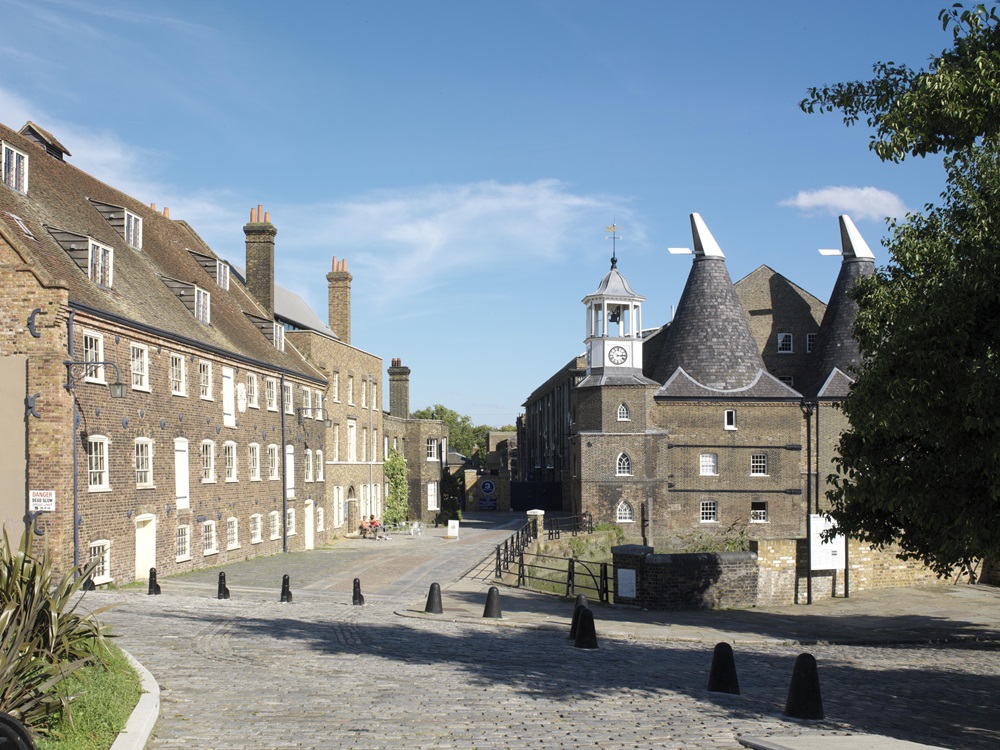A major expansion of the 3 Mills Studios in east London has been completed, adding more than 10,000 sqft of creative workspace to the film and TV studio hub.
The importance of media to London’s economy is significant, as film and TV productions made in and around London over the last five years have generated more than £10bn for the UK’s economy. There had been concerns that large film and TV productions had moved out of London due to a lack of studio space.
The upgrade of the 3 Mills Studios will enable the centre to expand its offering to film, TV productions and theatre was made possible by funding from the Government’s Getting Building Fund via a £3m grant allocated by the Mayor of London, and a further £1.9m funding has been provided through the LLDC’s Community Infrastructure Fund.
London is now experiencing an increase in the development of new and upgraded studio spaces, with this upgrade to 3 Mills Studios and London’s largest new studio for 25 years opening in Dagenham. Together these projects are helping to create more than 1,000 jobs, from marketing and design to animators and camera crew.
Today, Sadiq visited 3 Mills to see the completed work and ongoing rehearsals taking place for the stage show Matilda the Musical, which is on at the London Cambridge Theatre.
The Mayor of London, Sadiq Khan, said: “London is a global hub for film and television and 3 Mills has been pivotal in the success of the industry. The restoration of these historic buildings not only offers much needed space for more industry production to take place in the capital, but also supports over a thousand jobs in the heart of east London. It will enable the studios to play a major role as the capital’s film and TV industries support our economy and we build a better London for everyone.”
Three Mill Island, home to the studios, is one of east London’s most important historic sites, and London’s oldest surviving industrial centre. With mills on the island since the 11th century, as recorded in the Domesday Book, during its history the site has at time produced flour for Stratford’s bakers, gunpowder for Elizabethan soldiers and gin for Victorian London’s pubs.
The largest of the remaining mills – House Mill – dates from 1776, and is the largest existing tidal mill in the world.
The mills sustained damage during the Second World War, and the site was used for warehousing until, in the 1980s, three studios were founded on the site: Bow Studios, 3 Mills Island Studios and Edwin Shirley Productions. These merged to become 3 Mills Studios in the mid 1990s.
In August 2004, the London Development Agency acquired the studios, and ownership was transferred to the London Legacy Development Corporation – the organisation responsible for Queen Elizabeth Olympic Park – in 2010. From this point to the end of the London 2012 Games, 3 Mills Studio was the home of the London 2012 Ceremonies Team, who used the space for rehearsals and auditions for the opening and closing ceremonies.
The Legacy Corporation now runs 3 Mills Studios commercially as an important part of its mission to drive economic growth in east London.








I worked here in the early 1980’s , the clock house and warehouse behind
It would on certain occasions flood , with the water going through the windows on the right of the picture at the bottom, 600 of us worked there
And it was a great place to work .